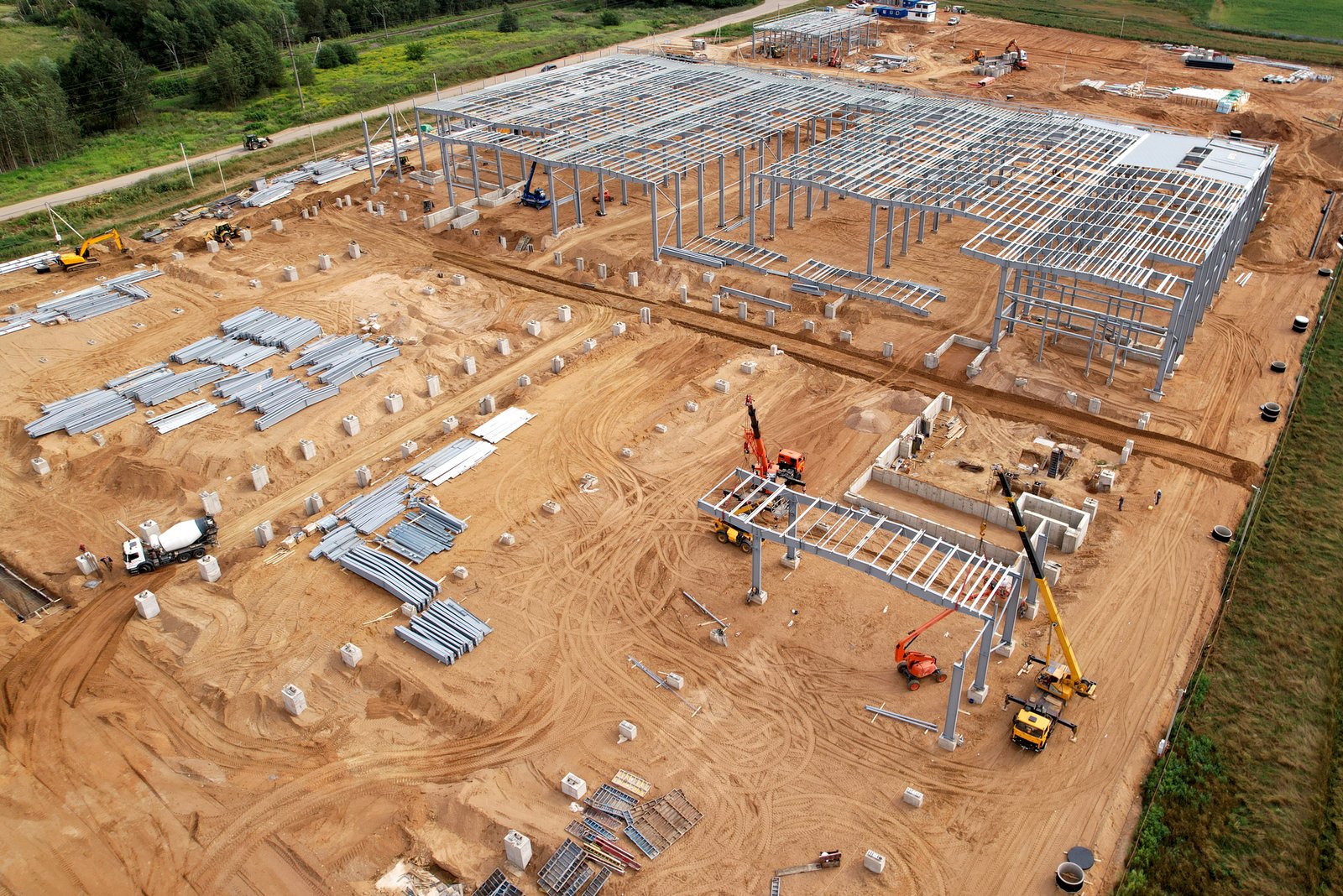In large construction projects, one of the most overlooked but critical supply chain decisions is whether equipment is OFCI or CFCI. The difference can make or break your project timelines.
If you’ve ever been involved in building a factory, data center, or another capital-intensive facility, you’ve likely come across the terms OFCI and CFCI. Yet, many stakeholders outside of direct procurement or construction teams struggle to fully grasp what they mean and why they matter.
These terms define who is responsible for procuring key materials and equipment. As a result, they directly impact supply chain planning, logistics coordination, visibility, and ultimately, project success.
In this article, we’ll explain:
- The difference between OFCI and CFCI
- Why each model carries unique risks
- How supply chain misalignment can lead to project delays
- And what best practices can help ensure smooth execution
What Do OFCI and CFCI Stand For?
Let’s begin with a simple breakdown of the two terms:
OFCI stands for "Owner Furnished, Contractor Installed". In this model, the owner (typically the client or developer) is responsible for procuring equipment or materials. Once delivered to the site, the contractor will handle installation.
CFCI means "Contractor Furnished, Contractor Installed". Here, the contractor manages both procurement and installation of the required items.
At first glance, the distinction seems straightforward. In practice, however, the choice between OFCI and CFCI affects everything from delivery timelines and cost control to coordination, communication, and risk ownership.
Why It Matters: OFCI Means More Control but Also More Responsibility
OFCI is often used when the owner wants tighter control over key equipment purchases. This could be due to long lead times, the need for consistent specifications across sites, or pricing advantages through direct procurement.
By purchasing directly, owners can standardize equipment across projects, negotiate better terms, and stay close to delivery status.
However, this also means the owner becomes responsible for the entire upstream supply chain. That includes vendor selection, order tracking, transport logistics, customs clearance, and on-site coordination. If an item arrives late, damaged, or incomplete, the responsibility lies with the owner, not the contractor.
For example, imagine a chiller system arriving two weeks late under an OFCI arrangement. That delay may block HVAC work, which in turn holds up electrical installation. A single late delivery can trigger cascading delays throughout the entire project.
CFCI: Simpler for the Owner but Less Transparent
In the CFCI model, the contractor takes full responsibility for both procurement and installation. This can significantly reduce complexity for the owner, who only needs to manage one point of contact.
However, CFCI can also lead to blind spots. Owners may have limited visibility into supplier choices, procurement timelines, and delivery status. If something goes wrong or a delivery is delayed, the owner may not hear about it until it’s already affecting progress.
CFCI works well for low-risk or standard items, or when the contractor has a proven procurement process. For high-value or long-lead items, though, the owner still needs visibility to avoid surprises.
Where Projects Go Wrong: Lack of OFCI/CFCI Coordination
One of the most common and costly issues in large construction projects is the lack of clarity between OFCI and CFCI responsibilities.
Typical coordination gaps include:
- Unclear contract terms about who manages transport or customs
- Equipment arriving without proper documentation or installation drawings
- Missed handoffs between procurement, freight, and construction teams
- Contractors receiving late or incorrect items without warning
These issues often stem from disconnected systems and fragmented communication.
How to Reduce OFCI and CFCI Risk
Poorly managed OFCI and CFCI decisions can lead to missed deadlines, budget overruns, and broken trust between stakeholders. The good news? These risks are entirely manageable — if you take a proactive, collaborative approach.
Below, we outline five actionable strategies to help reduce OFCI and CFCI risk in large-scale construction projects. Whether you're the owner, general contractor, or part of the logistics chain, these best practices will help you stay ahead of delays and keep your project on track.
Create an Integrated Logistics and Procurement Plan
Why it matters: OFCI and CFCI items often follow separate planning tracks, even though they converge on the same construction timeline.
A truly integrated logistics plan combines both OFCI and CFCI items into a single schedule, clearly showing:
-
Required delivery windows
-
Installation sequencing
-
Site access and readiness checkpoints
-
Dependencies on other trades or systems
Use this plan to align expectations between all stakeholders — including suppliers, freight forwarders, customs brokers, and site managers. This unified timeline should be updated regularly to reflect real-time shifts in procurement or transport.
Tip: Include buffer periods for long-lead OFCI items and flag interdependencies with structural or mechanical work. That way, one delay won’t domino through the rest of the schedule.
Define Roles and Responsibilities in Detail
Why it matters: Ambiguity is one of the biggest risk factors in OFCI and CFCI execution.
Clearly define, in both contracts and project documentation, who is responsible for:
-
Selecting and approving suppliers
-
Ordering equipment
-
Managing freight and customs
-
Providing documentation (e.g. manuals, technical drawings, warranties)
-
Coordinating on-site delivery and handoff to installers
Avoid vague phrasing like “owner to supply” or “contractor to coordinate” — this leads to misunderstandings. Instead, map each step of the equipment lifecycle to a specific role.
Example: For a large air handling unit, the owner might handle procurement and transport (OFCI), while the contractor is responsible for site offloading, storage, and installation prep. Spell it out.
Use a Centralized, Collaborative Supply Chain Platform
Why it matters: Email threads, spreadsheets, and siloed project management tools are not sufficient for today’s complex construction environments.
Modern supply chain collaboration platforms allow all stakeholders to:
-
Track shipments and delivery ETAs in real time
-
Share technical documentation and approvals in a structured way
-
Flag issues early and assign accountability
-
Maintain a complete audit trail for every decision and update
Especially for OFCI items, where the owner and contractor may not share the same internal systems, a shared digital environment avoids communication breakdowns and ensures transparency.
Bonus: These platforms often include web based applications, so field crews can confirm delivery status, scan barcodes, or monitor their projects directly from the jobsite.
Track Critical Path Items with Risk-Based Controls
Why it matters: Not all OFCI/CFCI items carry equal weight. Some directly affect the project’s critical path — and should be treated accordingly.
For any equipment that could hold up downstream work (e.g. electrical switchgear, HVAC chillers, fire protection pumps), apply enhanced risk controls such as:
-
Early procurement windows
-
Escalated tracking and milestone check-ins
-
Priority customs clearance coordination
-
Dedicated logistics routes
These items should also be included in executive-level reporting and reviewed during regular risk review meetings.
Pro Tip: Use a risk heat map to visualize which OFCI/CFCI items pose the highest impact if delayed.
Establish Formal Handoff Procedures
Why it matters: Even when everything arrives on time, many projects stumble during the transition from delivery to installation.
Avoid “dead-on-arrival” equipment by setting up formal handoff protocols between procurement/logistics and site construction teams. These protocols should cover:
-
Inspection upon arrival (for damage, quantity, completeness)
-
Verification of documentation (installation manuals, test certificates)
-
Safe and secure staging areas
-
Pre-installation readiness checks (e.g. embedded power or drainage)
Document these handoffs and assign responsibility for resolving discrepancies quickly, before they impact the build schedule.
Bonus Tip: Align Incentives Across All Parties
In many projects, owners and contractors have different KPIs — which can lead to misalignment. Consider building shared success metrics (such as OTIF targets for OFCI deliveries) into your contracts or performance reviews. When everyone is measured against the same milestones, coordination naturally improves.
Final Thoughts
Reducing OFCI and CFCI risk isn’t just about procurement — it’s about planning, accountability, and collaboration across every tier of your supply chain. The most successful construction projects are those where equipment flows seamlessly from supplier to site, supported by clear contracts, strong digital infrastructure, and shared visibility.
Whether you're delivering a data center, a manufacturing plant, or a large retail facility, the choice between OFCI and CFCI — and how you manage it — will shape the outcome of your project.



